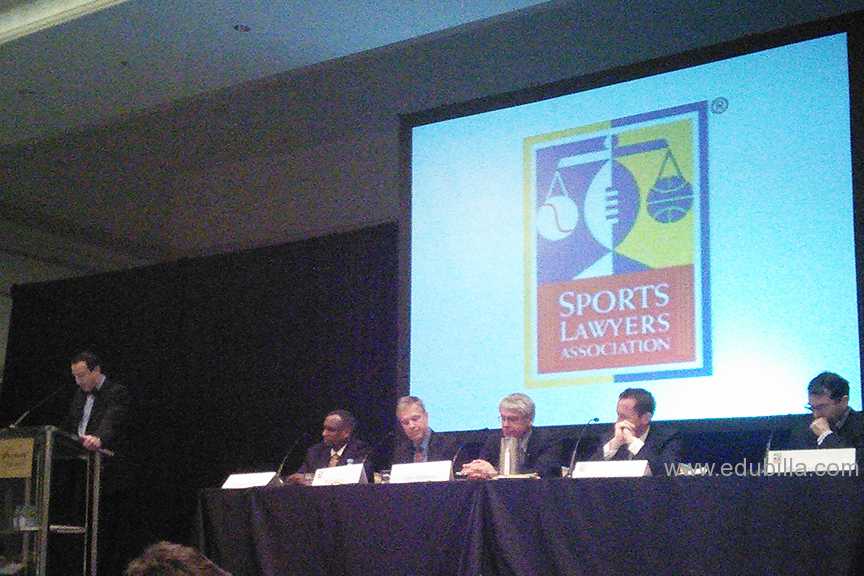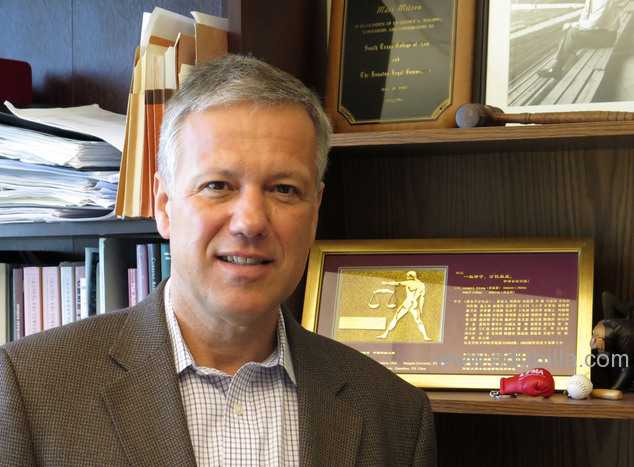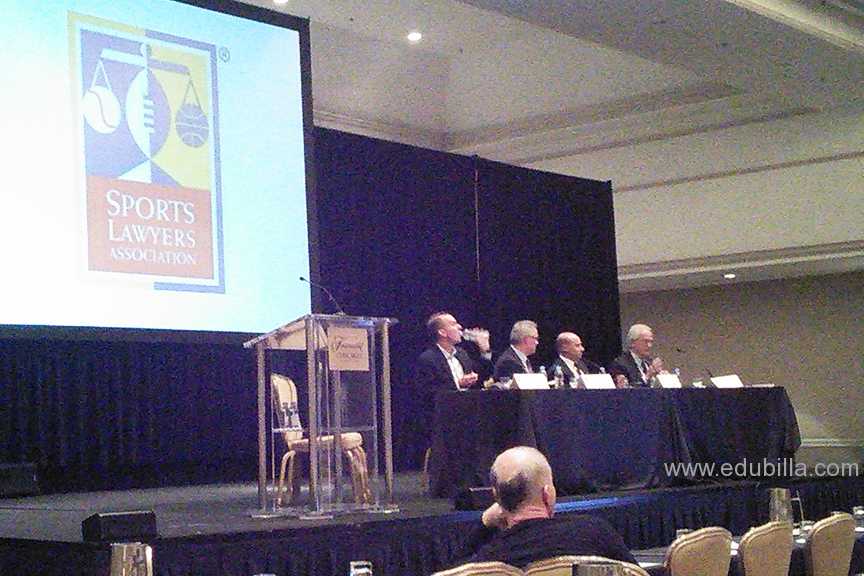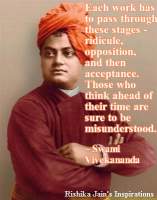About Sports Lawyers Association
Established On : 1975
In order to understand the nature and functions of the Sports Lawyers Association ("SLA"), it is important to understand (i) the history and nature of sports law, (ii) how people become sports lawyers, (iii) how and why the SLA came into being, and (iv) how they first became members of the SLA. The years leading up to 1975 were bleak regarding relations between representatives of teams and those of players. Teams were aggressively preventing their athletes from engaging the services of representatives, whether lawyers or not. At least one agent, who happened to be a New York lawyer, was physically ejected by goons hired by his client's employer — the team. Several clubs absolutely refused to deal with an agent. The animosity between teams and agents had become intense and, indeed, downright dangerous.Although it was abundantly clear that something had to be done to bring the two sides together, it was equally clear that it would not be by bringing owners and agents together. So a small group of us (five to be exact) decided that the best approach would be to bring together counsel for opposing parties, in much the same way that bar association committees bring together lawyers representing multiple sides of situations or transactions (e.g., Securities Law, where lawyers for issuers and underwriters attend; Antitrust Law, where lawyers for accused and lawyers for accusers attend) so they can discuss legal issues and the needs of their respective clients, in a very civilized and professional manner. Thus they could all become better able to help their clients achieve their goals and maximize their opportunities. In 1975, SLA was founded by a small group: Jack Mills, John Wendel, Rick Wagenheim, Tony Pace and myself. I was elected as president. My attributing that to the wisdom of the other four is not meant to imply that I was the best candidate; it merely suggests that I was the only person in the room foolish enough to take the job.
None of this mattered very much while athletes were paid "minimal wages" as a result of constraints on athletes' movements to other teams. That all changed when the free agent concept was confirmed through contentious litigation as a result of which athletes' compensation began to escalate. In the 1970's, one of the future members of the SLA, Dick Moss, was counsel to the MLB Players Association, and litigated the Curt Flood Case, that would ultimately outlaw the restrictions that prevented players from seeking contracts with other teams and legalize the free agency concept. As a result, players could negotiate for larger salaries.
To give you some perspective on the difference between compensation paid today and compensation paid then, I'd like to relate the story about the 2001 annual meeting of the SLA. Our guest speaker for the luncheon was former U.S. Senator and Presidential candidate, Bill Bradley, who also had a career as an NBA basketball player, after graduating from Princeton, where he also played ball. He told the story about his father who was rather upset when he heard that Bill was going to college, where he'd be playing basketball. He suggested, at first, that Bill get a part-time job while attending school. Bill explained that he could not do that because he was spending so much time practicing and playing basketball. Each year when he would go home for Christmas or Summer vacations, his father would say, "Bill, why don't you get a job?" and Bill would tell his father that he couldn't because he was playing ball. Eventually, he graduated from Princeton and became a Rhodes Scholar.
Upon returning from England, Bill explained to his father that he was going to play professional basketball in the NBA. His father, once again said, "Bill, why don't you get a job?," to which Bill replied, "Dad, this is a job. I am going to get paid for playing basketball." His father then asked Bill how much he was going to get paid, and when Bill answered, his father seemed totally satisfied. It was clearly an ample salary. It was $7,200 per year.
Probably even Dick didn't guess how far salaries would move as a result of the Flood case. In any event, suddenly, there was growing interest in being a sports agent, and it became possible to entice and convince lawyers representing players, owners and others involved in professional sports to become members of the SLA. Now, when I say "entice" and "convince," I really mean beg, plead, call in chips and otherwise twist people's arms to join the organization. Once they were there, however, they understood and appreciated the SLA's mission, which was:
to promote a high standard of ethical behavior,to create a forum where adversaries could communicate, and
to pursue continuing professional education.Starting out was anything but easy; there were many times and occurrences that made me wonder whether fate was telling us to quit. Just after we selected "Sports Lawyers Association" as the organization's name, with the acronym "SLA", the breaking news about the kidnapping of Patty Hearst identified the kidnappers as the Symbionese Liberation Army, whose acronym, the "SLA", became a household word. We decided to keep our name. Today, I can attribute that to stubbornness, arrogance, wise foresight, and confidence that the organization would outlast the Army and its public presence. Actually, it may have been attributable to our reluctance to spend the filing fees to amend our charter. Either way, we decided not to change our organizational name, although for years, the acronym "SLA" was used only in private conversations and always with a smile among the founders and earliest of members.
At about the same time that SLA was leaving the starting gate, a former head of the National Football League's Players Association ("NFLPA") started another organization, the Association of Representatives of Professional Athletes ("ARPA"), all of whose members were to be representatives of professional athletes, whether lawyers or not. This seemingly close relationship with the strong and prestigious NFLPA would have prompted Vegas odds makers to pick ARPA over SLA to survive the competition. ARPA of course is long gone, and SLA is thriving. Indeed, we've now been around so long that the most relevant organization for our founders is AARP, the American Association of Retired People. Clearly, our principle — bringing together both sides — was a fundamental difference over ARPA. I also attribute SLA's survival to the early members' commitment of energy and time and to principles, such as ethics, fairness and concern for clients (i.e., professionalism). Those principles were adopted early on by SLA leadership.
About a year after founding the SLA in 1975, I realized that (i) building this organization would take an inordinate commitment of time and resources, which I felt I couldn't afford (I reflected on that feeling many more times during my 11 years as President of the Association) and (ii) since attracting new members required continuous arm-twisting efforts (as described above), and realizing that getting other members to assume some of the burdens would take evidence of viability and success, I had created and was perpetuating a perfect catch-22 storm. So in 1976, I wrote to the American Bar Association, telling them of our existence, meager though it might have been, and offering to transfer this startup organization to them, so that they could integrate it into their fold, as a committee — The Sports Law Committee — dealing with growing (in number and complexity) issues of sports law. That was 1976, not 1876, yet the reply I received, in a letter from the American Bar Association, stated that they could not accept our offer because "there is no such thing as 'sports law'." Imagine that! About two years later, they recognized the error of their ways and began such a committee, with that very name, but that committee folded after a few years. I guess it's not easy building a sports law committee if you don't believe there's an area of law called "sports law."
Virtually at the same time that we founded SLA, state courts such as Florida were prosecuting lawyers who solicited young athletes as potential clients because the rules of legal ethics prohibited solicitation of clients. Of course, sports agents who were not lawyers were able to solicit potential clients. As a result of that uneven playing field, many athletes went with non-lawyer agents when they could have had the benefit of the extra knowledge, sophistication and standard of professional ethics of lawyers who practiced sports law. Indeed, had those athletes gone with lawyers to represent their interests, they would have been protected by all of the other rules of legal ethics to assure that they got a fair shake. Many years later, the NFLPA and subsequently the other Players Associations, instituted rules and certification procedures for agents who wanted to represent professional athletes. Indeed, they eventually used SLA Conferences as the forum for certification prerequisite classes.
Some of the interesting occurrences in the early years of the Association were as follows:
I twisted arms to gain members.At one annual conference (1979?), at Miami's Dupont Hotel, our speaker was Joe Robbie, then owner of the Miami Dolphins, who proceeded to give a talk on constitutional law, which I am sure would have appealed to the Minneapolis Bar Association where Joe originally had practiced law. It simply wasn't the subject matter that appealed to SLA members. All of a sudden, as members were shuffling in their seats, with yawns and other signs of boredom becoming embarrassingly evident to me, the hotel fire alarm rang, and hotel personnel commanded us to evacuate the hotel. To the best of our knowledge, it was not pulled by any of our bored members.When the "all clear" sounded and we were allowed to return to the dining room, Joe Robbie asked me, "Should I start over or just continue where I left off?" Thus I acquired the delicate job of explaining to Joe that we were out of time and had to move on. I've often wondered what other group was blessed with Joe's complete speech.I twisted arms to gain members.In the early 1980s, the use of illicit drugs (we're talking cocaine, not steroids) had become the biggest problem in sports, so we ran a program on that subject, bringing together the former head of the federal Drug Enforcement Agency, psychiatrists, psychologists, physicians, team owners, agents, etc. Mercury Morris, formerly of the Miami Dolphins, had been convicted of dealing in illicit drugs and was sentenced to an even longer prison term than the federal laws allowed. (The presiding judge had brought Mercury, before he was charged, to local schools to speak to kids, and she was no doubt embarrassed.) Our SLA V.P., Rick Wagenheim, convinced that presiding judge, who had imposed that aggressive sentence, to spring Mercury from prison for a day, so that he could address our group. When Peter Bensinger, the former head of the federal Drug Enforcement Agency, entered the room, Mercury Morris was already on the dais. Seeing Peter, Mercury sprung to his feet and yelled, "You're the guy who took my car." For a brief moment, no one was sure what might happen next, and the only person more nervous than I was probably Bensinger. Clearly I was glad the judge insisted that we pay for two sheriff's deputies to accompany Mercury throughout the day. Ultimately, the deputies' services were unnecessary, and we went on with the conference, which was extraordinary.
I twisted arms to gain members.One year, in the 1980s, our guest speaker was Bowie Kuhn, the just retired Commissioner of Baseball. Bowie received what was then the first standing ovation by an SLA audience. Through a decade of running excellent programs, no one had been so honored. Interestingly, the second person to receive a standing ovation at one of our programs was Richard Dieshart, who played the senior partner of the law firm on the famous TV show, "LA Law." He wasn't even a lawyer, yet he secured the second such standing ovation. I can't tell you how pleased and honored I was to receive the SLA's third standing ovation, but that was when I announced that I was resigning as president of the SLA, after eleven years. Maybe they were pleased to see me finally go.
I twisted arms to gain members.I mentioned that Bill Bradley had been a speaker. For Pete's sake, he was a U.S. Senator and a Presidential candidate. I don't how much more we could have achieved, although we did have other speakers of some notoriety, including NFL Commissioner Paul Tagliabu, Chicago Blackhawks owner Bill Wirtz, NBA Commissioner David Stern, Pete Rose and many others. Bill Wirtz, who passed away in 2007, was a good friend, a loyal employer who cared personally for his athletes, and a gentleman. Unfortunately, he was also an alcoholic. While he eventually was able to control that problem, at the time he spoke to SLA, the demons remained in control. Bill arrived at the Fairmont Hotel at 3:00 p.m., having already imbibed considerably. He pulled me over to the lobby bar where he drank continuously, until we went to the SLA cocktail party, where he maintained his impressive consumption rate. As he and I sat down at the dais and the waitress went to fill his wine glass, he took the bottle and suggested she get another for everyone else. At the completion of dinner, with Bill already on his second bottle of wine, I had to introduce Bill to the audience of about 100-150 sports lawyers. Needless to say, I was nervous about what Bill would say and how he would say it. I hurriedly thought of what I might say to cover. I was more than pleasantly surprised when Bill got up, without any notes, and gave an articulate and thought-provoking speech which was well received by all.
I twisted arms to gain members.
Our daises were not limited to the rich and famous. It was shared with educators, practitioners, government employees (e.g., California Corporation Commissioner, Peter Bensinger) athletes and the most experienced of our members. Our annual seminars literally killed the competition. Programs conducted by the American Bar Association, Association of Representatives of Professional Athletes, the New York Bar Association, and other seminar-running organizations experienced ever-dwindling audiences and thus fading relevance, while the SLA annual conference had growing attendance, acclaimed programs and acknowledged relevance. The earliest SLA conferences had under 50 attendees, and that was largely the result of my twisting arms. I actually also twisted the arms of friends and acquaintances in Florida, who had nothing to do with sports law, getting them to attend some of our earliest conferences and dinners, just to fill the room and prevent legitimate attendees from feeling alone. Eventually, the SLA annual conferences filled grand ballrooms with well over 500 people, without arm-twisting.
I twisted arms to gain members.All that arm twisting paid off, and our membership roll increased both in quantity and quality. We gained members like Stan Kasten, now one of the owners and CEO of the Washington Nationals and previously the only person to serve as CEO of three teams simultaneously, while he headed up all of Ted Turner's organizations; Reuven Katz, who represented baseball players such as Johnny Bench, Pete Rose and Tony Perez, and who, when selected by the University of Indiana to represent Larry Byrd, turned it down, because he did not think he could do the best job for such a wonderful athlete (Reuven is a wonderful example and role model that proves that the SLA's mission was achievable).
Some of our "arm-twistees" went on to different occupations. Former members who come to mind are Bulls and White Sox owner, Jerry Reinsdorf; championship-winning manager, Tony La Russa; former CEO of Oprah Winfrey's Harpo, Jeff Jacobs; former NBA Players Association President, Larry Fleisher, and others.
Some of our other "arm-twistees" were instrumental in dramatic changes in professional sports, such as Herb Rudoy who virtually developed the superhighway between Europe and the United States with hoopsters traveling in both directions; Dick Moss who turned the economics of professional sports upside down, for better or worse; and Stan Kasten, who was instrumental in developing the salary cap for the NBA.
Other members whose arms I twisted included Richard Berthelson, counsel to the NFLPA, who dramatically enhanced the SLA's reputation and credibility, when he caused the NFLPA to conduct their program for educating prospective agents (a prerequisite for certification by the NFLPA) at and in conjunction with our Association's Annual Conferences.At our annual conferences, a variety of subjects were discussed and presented. Perhaps one of the more interesting programs was developed by Reuven Katz. It discussed how newcomers could break into the game and become sports agents. Reuven used to tell a wonderful story about going to a bar where athletes were known to congregate and eventually meeting professional athletes who learned that he was a sports lawyer. I have often wondered whether some of our younger, newer members used this to the appropriate advantage described by Reuven and have come to our annual meetings ever since or whether they have been busy attending Alcoholics Anonymous meetings instead.
We've always said that the purpose of the organization was to get professionals to communicate better, and for the most part that meant communicating better with lawyers representing opposing clients. It also meant enhancing their ability to communicate with their own clients. As these lawyers learned more and more about approaches taken by other lawyers, representing teams, athletes, leagues, players associations, media companies, endorsed product manufacturers, etc., they were better able to educate, inform and prepare their clients for some of the more difficult aspects of being involved in professional sports.At one point, the SLA, in conjunction with Illinois State Senator William Marovitz, drafted a bill that might become a uniform Bill, if adopted by all states, to regulate the practice of representing professional athletes. When it became clear that the states were more interested in adopting their own legislation, we obtained the support and assistance of U.S. Senator Robert Packwood, then Chairman of the U.S. Senate Commerce Committee, and drafted proposed federal legislation. Somehow other matters took precedence. It is hard to imagine that Congress does anything more important than regulate sports lawyers.
While I am extremely proud of "my baby," the SLA, and appreciative of those members who took the mantel of leadership, when I "retired" as president of the SLA, one of my proudest moments occurred 25 years after the founding of the SLA.When I refused to run for reelection, in 1987, I gave what I thought would be my final speech to the SLA (especially after that ovation celebrating my departure). In that speech I suggested that the SLA do something to improve the image of sports lawyers, specifically by creating a charitable-giving fund. I warned that, some day, there might be a movie or TV show about the antics of some sports agents, and that a charity program would help separate SLA Members from those images.
When SLA celebrated its 25th anniversary, they were kind enough to invite me to be the key-note speaker at their Annual Meeting lunch. I described the history of the SLA to the 500+ people in the audience. Near the end of my talk, I reminded them of my 1987 warning and suggestion. By then (2000), the Tom Cruise movie, "Jerry Maguire" and the TV show "Arlis" were history. So once again, I urged the adoption of a charity policy and program. At the end of my speech the incoming president, Bill Webb, counsel to the Philadelphia Phillies, said he agreed and as his first act as president, was appointing me as Chair of a new Philanthropy Committee, a post I willingly accepted and held for a couple of years. I'm extremely proud of the continuation of that Philanthropy Committee and Program, which has made sizable contributions to the following groups: Athletes Against Drugs, Inner-City Games, The Foundation For Blind Children, Special Olympics Canada, Parks and People Foundation, The Argos Foundation — Stop the Violence, MetroLacrosse and Sport in Society/Urban Youth Sports and First Tee of San Francisco. I hope all the SLA Members share my pride in the philanthropic contributions of the SLA.
Sports lawyers are by no means all the same. One interesting difference in how they became sports lawyers. For many, especially in the early years, it was a fluke. For example, Reuven Katz was referred a client for a house closing, who happened to be on the Cincinnati Reds; Rick Wagenheim was a Workman's Compensation lawyer who would up representing athletes; several members who were lawyers at large law firms, handling legal matters relating to a big client's business interests, were the natural person the client turned to when he bought a sports team; and in my case, I was doing tax planning for a CEO of a Fortune 100 subsidiary who happened to sponsor a race car, which led to my representing an Indy driver who later introduced me to other drivers and even to my first team players (Chicago Blackhawks).
There have been times when SLA Members who represented players yelled at SLA Members who represented terms and owners, and vice versa; there have even been those SLA Members who walked out of meetings to show their disdain and differences. There have been a few members who resigned to express their differences and a few whose applications for membership were denied. Yet, in all these years and decades, those were totally insignificant, compared to the hundreds of partnerships that developed and the thousands of times that negotiations and transactions were enabled and enhanced by those very relationships. Peer pressures clearly existed. No one will ever know for certain, but I am confident that it has had a profound effect on improved ethical behavior and knowledgeability of many SLA members, representing various people and companies involved in professional sports.
Today, everyone would agree that the American Bar Association was wrong and that there are sports lawyers and an area of specialization called sports law. Indeed, the SLA now has over 1,000 members nationally and internationally, including practitioners, law professors and law students. With that growth the SLA hired an association management company in the 1990s to manage its administrative affairs, first in Racine, Wisconsin and now in Reston, Virginia. Those of us who have been involved for decades, and even those more recently involved, also know that the Sports Lawyers Association has achieved and continues to achieve its Mission.
Achievements of Sports Lawyers Association
The Sports Lawyers Association Award of Excellence
Members List
Association Gallery
Contact Details
Contact Person
Matthew J. MittenAddress
12100 Sunset Hills Road, Suite 130, Reston, VA 20190Pincode
VA 20190Association Website
https://www.sportslaw.org/Contact Phone Numbers
703.437.4377Fax Numbers
7034354390










